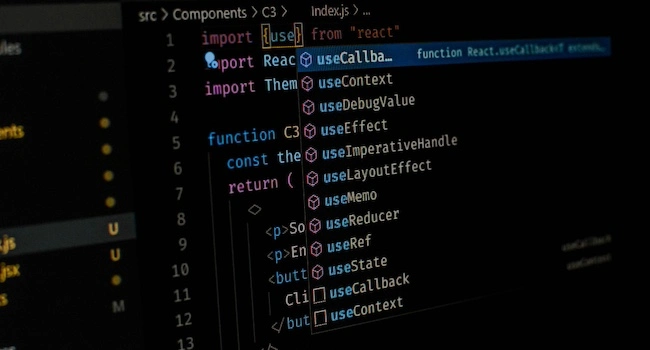Scaled Agile Framework & Methodology Overview
Looking for information to get more details about SAFe? Learn here.

Table of Contents:
Scaled Agile Framework or SAFe became a powerful and world-leading methodology to Business Agility for many organizations, including startups and large enterprises. According to the reviews, it provides many benefits that include around:
- 50% productivity growth
- 70% improvements in quality
- 70% faster time-to-market
- 55% employee engagement growth
- 50% increase in motivation
70% of @Fortune100Companies, including @Global2000 have SAFe experts and certified consultants in their teams. As you can see, with such numbers, the framework adoption is increasing globally. Sure, lots of folks want agile methods, but most of the project management practices are not agile. Many people don't understand what business agility entails.
So what is SAFe? Let’s get to the point and provide a comprehensive explanation of SAFe and give a minimal overview, highlighting the most important aspects.
SAFe Basics & Brief History
Before we describe the term, let’s briefly answer the question: "What is Agile?". We would like to provide a general idea of the approach for those who have already heard words such as Agile, Scrum and sprint, but did not have the opportunity to study the topic in detail.
Agile is a set of principles and approaches that direct the resources of small, medium or large companies to quickly create products that customers need. Since 2001, Agile has been used for software development and IT field, and it has been seen as one of the most successful development management approaches. Agile is a separate methodology. At the same time, it includes various methods and approaches to management which helps team to:
- Focus on the needs and goals of clients
- Simplify organizational structure and processes
- Complete projects in short cycles
- Create a valuable result for the client
- Demonstrate a high level of self-organization
- Accept responsibility and much more

In addition, there are a number of frameworks related to scaling Agile approaches. The “framework” term is used for a set of practices and tools within an agile approach. The most significant and commonly used Agile frameworks today are Scrum, Kanban, and Scaled Agile Framework (SAFe).
The business agility of a company, including its ability to prepare for and hold up against changes, endure through market volatility, shifting customers' needs are crucial aspects for the company’s growth. According to the source, SAFe Framework provides clear and holistic methods and practices that allow a company to cope with the above aspects and successfully launch a large-scale project, or we would rather say a whole program of projects.
Based on Agile and Lean principles, this approach allows coordination of the work of an entire group of teams. What is most important: it allows management to make certain predictions and plans based on the coordinated work of teams.
Let’s see other definitions:
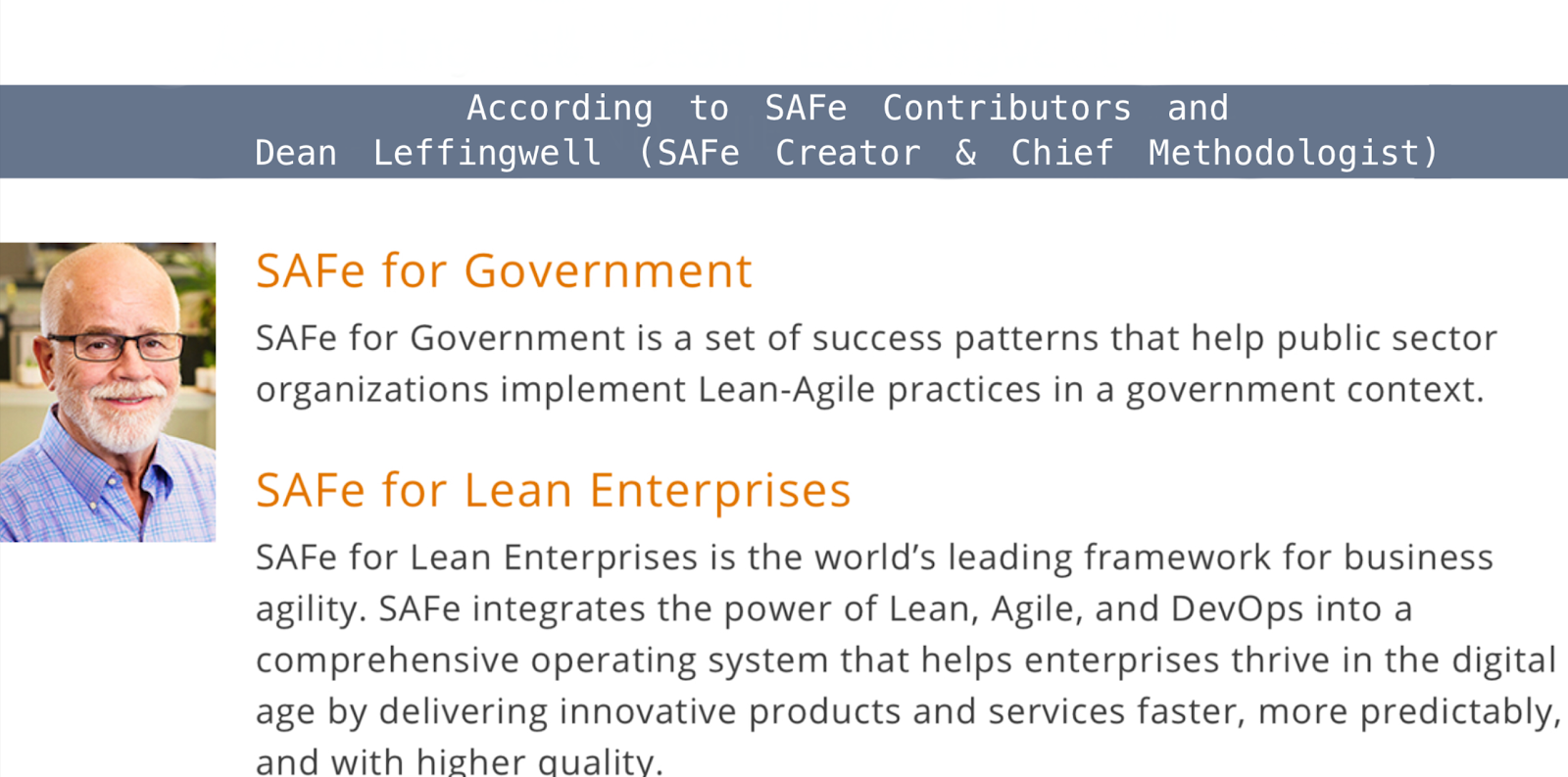
By the way, a person who created the framework is Dean Leffingwell. But it is not something that suddenly has been released in 2011, but rather the result of the work of many people and a collection of the best ideas. Dean Leffingwell is the creator of this knowledge base and the chief methodologist. You can find more information about contributions and roles, as well as an impressive list of literature here.
To explain how everything works together, let’s check the main principles and core values.
What Are the Core Principles & Values of the Approach
SAFe is a layered cake from a variety of Agile and Lean methodologies. The important aspect is the SAFe foundation. It presents in the form of:
- Principles and core values
- Lean-Agile worldview
- Transformation plan and
- People who help implement SAFe
Another important aspects are Lean-Agile Mindset and Lean-Agile leadership (not only an individual with a high competence in a company, but a whole team that acts proactively and constantly improves skills, processes and product).
Main Principles
Let’s see the main principles now. Basically, the framework is based on the Agile and Lean principles. Each of the principles described in detail at the official website:

Core Values
As we said above, one of the most important SAFe foundations is its core values. There are 4 Core Values that outline the effectiveness of the framework:
- Alignment - you have to follow the rules, otherwise, chaos within an organization can lead to serious issues. Even when everyone understands where the team is heading, eventually, without proper communication and regulations, it may end up in a different place. If you plan to carry out transformation, you need to make sure that communication is easy to manage, and it is fast and simple enough, otherwise you will lose a lot of money.
- Build-in Quality - the main purpose of this value is to maintain variability. This will allow you to quickly expand your architecture to meet your business needs. It is important to provide high-quality products and maintain the level of technological innovation, and form the foundation for this as early as possible. You have to provide the value of built-in-quality for large solutions.
- Transparency - developing solutions is difficult, and sometimes painful. In order to achieve success, you cannot do everything on your own. As a consequence, we must rely heavily on our team, departments, and at the same time work as one with a predictable result. The mechanism will not work without trust, where transparency is just a lever for enabling trust. Processes should be transparent for each of the teams: development, operating systems, business, account, sales, etc.
- Program execution - execution is key and this value applies not only to the employees. We all know that in order to successfully carry out an agile transformation, it must be supported by top management. Lean-Agile leaders have to support the team and act as guarantors of adherence to the principles of each of the employees.
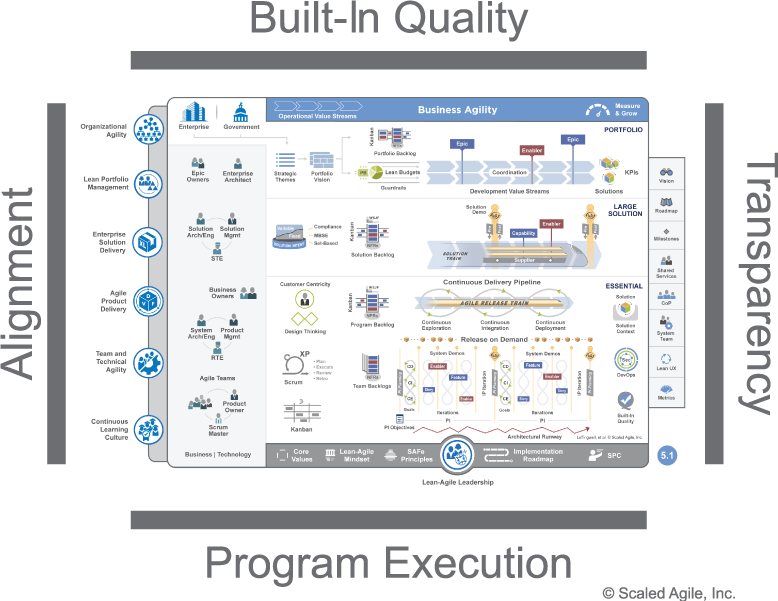
How Does SAFe Differ from SCUM and Kanban?
Recently, SAFe has confidently taken the lead in the global agile framework race. In which industries is it most common? As always, the IT market. Finance is the second wave of agilization. We are waiting for the third big wave in telecom and heavy industry. You can see so much innovation, even in medicine according to the healthcare trends of 2021.
We’re seeing why agile approaches work. First of all, you can build new solutions and solve problems in really cool ways. But let’s check other frameworks and compare them with SAFe:
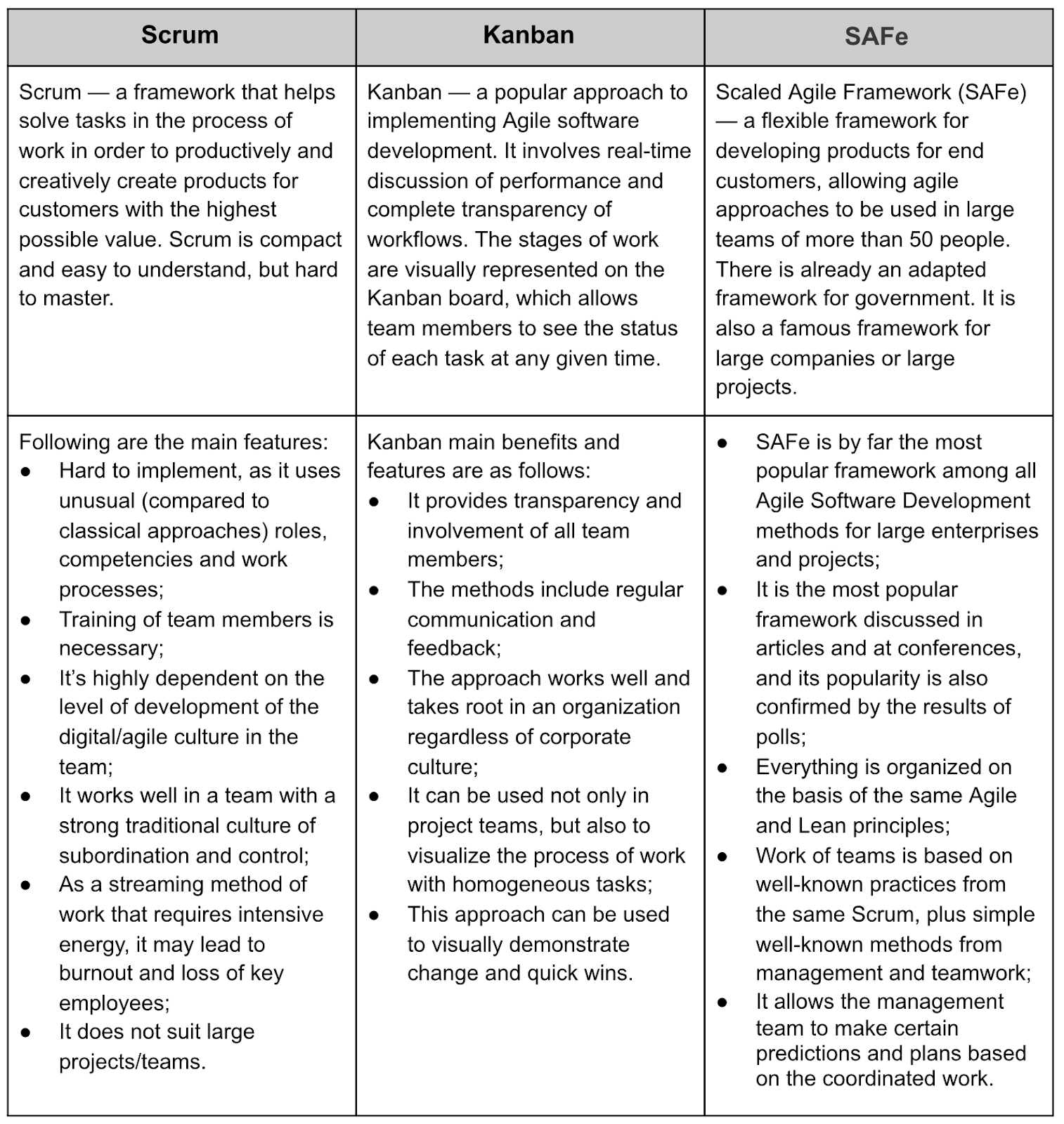
We think one of the most important advantages and disadvantages of SCRUM is the prescribed team size: around 7-9 experts, including Product Owner. Yes, there is Large Scale Scrum, Disciplined Agile Delivery, but there is also SAFe. SAFe is a company management framework that requires coordination of work on some project or related projects for 5 or more SCRUM teams. This is a kind of superstructure over SCRUM that allows you to manage teams of 100 or more people. Make sure you have a clear goal, proper SaaS tech stack when picking a framework. Focus on a benefit and results.
Additionally, the icon you pray for every time you open the Scaled Agile Inc. website is called SAFe Big Picture. It is a new version: Scaled Agile 5. Here is the video, it is a 17 minutes presentation that reveals What’s New in SAFe 5. You can check it out!
Final Takeaway
SAFe is like a layered pie from a variety of Agile methodologies. At the bottom level is the almost traditional Scrum that you can use for large projects. All typical rituals, from the daily stand-up meetups to the briefing at the retrospective. It is not a panacea for all the issues associated with large-scale projects, however, it is a great tool when we speak about effective investment.
The methodology is also needed for people who sell the framework and train teams, for the program management departments and for those who were previously involved in project management and implement the concept of hard-soft management. Further, it can be beneficial to those business owners where managers work on large projects. It is a necessary approach for the whole IT industry.
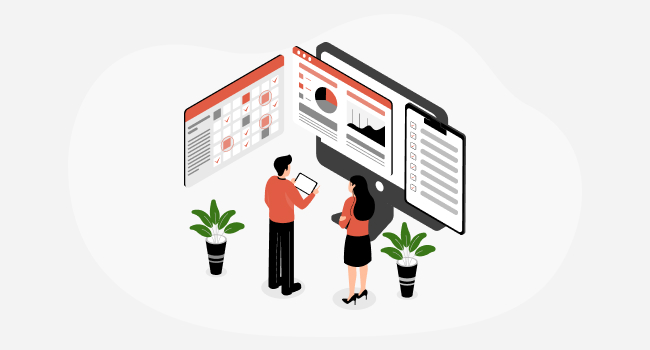
If you are looking for more information and details about the framework work, functions and processes, you can contact StarNavi. Our full services are available via online methods such as phone, email and video calling!






